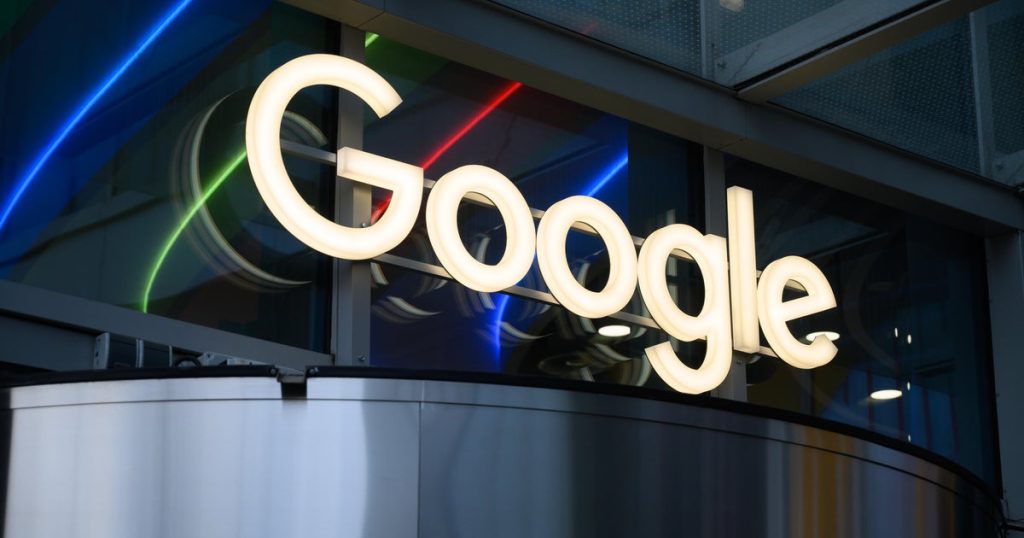A federal judge has ruled against Google for the second time in under a year, accusing the tech giant of abusive monopolistic practices in its online marketing technology. U.S. District Judge Leonie Brinkema issued the decision, highlighting how Google’s control of its ad network has stifled competition and innovation in the digital advertising landscape. This ruling, which comes in the wake of a previous ruling concerning Google’s search engine dominance, reflects ongoing efforts by the U.S. Justice Department to challenge Google’s expansive market influence, aiming to reduce its leverage in the advertising sector valued at an estimated $1.8 trillion.
| Article Subheadings |
|---|
| 1) Overview of the Ruling |
| 2) Implications for Google and the Ad Market |
| 3) Key Arguments Presented During the Trial |
| 4) Reactions from Google and Analysts |
| 5) Next Steps in the Legal Battle |
Overview of the Ruling
The recent ruling by federal judge Leonie Brinkema serves as a significant development in the ongoing scrutiny of Google’s business practices. Released on Thursday, the decision concludes that Google has exploited its advertising technology to dominate the digital marketing space, thereby undermining competitors. This ruling follows an earlier decision in August, which found that Google’s search engine practices were similarly anti-competitive. The two rulings mark a concerted effort by the U.S. Justice Department to rein in what it views as monopolistic conduct by one of Silicon Valley’s most prosperous companies.
Implications for Google and the Ad Market
The ramifications of this ruling could be profound, altering the landscape of the digital advertising market. With an estimated worth of approximately $1.8 trillion, this market is crucial for many online publishers and advertisers. According to findings from the Justice Department, Google has maintained its dominant position through a combination of anti-competitive practices and aggressive acquisitions over the years. The current atmosphere suggests that Google may face significant penalties aimed at dismantling its monopolistic hold. Such actions could lead to increased competition, potentially benefiting smaller advertising firms and website publishers who have long depended on Google’s ecosystem for survival.
Key Arguments Presented During the Trial
Throughout the trial, the Justice Department presented evidence suggesting that Google has leveraged its ad services to create a coercive environment for advertisers and publishers. Witnesses from major media organizations, such as Gannett and News Corp, testified to the difficulties they faced in competing for advertising revenue in a market dominated by Google. According to Justice Department lawyers, these practices have put undue pressure on news publishers, pushing them into a precarious financial state due to reliance on Google for ad revenue. The judge, however, also noted that while Google used its market position to disadvantage competitors, specific acquisitions like DoubleClick and Admeld did not constitute illegal monopolistic behavior when considered separately.
Reactions from Google and Analysts
In response to the ruling, Google expressed its intention to appeal, maintaining that it provides valuable tools for publishers, citing their simple and efficient nature. Lee-Anne Mulholland, Google’s vice president of regulatory affairs, stated, “We disagree with the Court’s decision regarding our publisher tools.” Analysts have generally predicted that Google would not win the case, reflecting a cautious sentiment among investors. Following the ruling, shares of Google’s parent company, Alphabet Inc., fell by 1%, continuing a downward trend that has seen a 20% decline in stock value year-to-date.
Next Steps in the Legal Battle
As the legal proceedings continue, there are significant developments on the horizon. The court will soon enter a penalty phase to determine the consequences for Google, which could potentially include significant restrictions on their business practices. Meanwhile, Justice Department lawyers are scheduled to initiate remedy hearings in an earlier case concerning Google’s search monopoly. Here, they will advocate for stringent measures to be imposed on Google, including a forced sale of its Chrome web browser. The outcome of these cases will likely take years to unfold, as Google prepares to appeal both decisions vigorously.
| No. | Key Points |
|---|---|
| 1 | Federal judge ruled Google engaged in abusive monopolistic practices. |
| 2 | The U.S. Justice Department is challenging Google’s dominance in digital advertising. |
| 3 | Potential penalties could reshape Google’s practices and influence in the market. |
| 4 | Witnesses highlighted the impact of Google’s dominance on news publishers. |
| 5 | Google plans to appeal the ruling and defend its marketing practices. |
Summary
The recent federal ruling against Google underscores the ongoing scrutiny of its business practices in the realm of digital advertising. With the firm accused of exploiting its dominant market position, the legal battles are set to continue, potentially reshaping the environment for advertisers and publishers alike. As the U.S. Justice Department pushes for accountability, the implications of these rulings may pave the way for a more competitive landscape in the tech world.
Frequently Asked Questions
Question: What led to the recent ruling against Google?
The recently issued ruling against Google stems from allegations that the company has engaged in abusive monopolistic practices within its digital advertising operations, thus stifling competition and innovation in the market.
Question: How does this ruling impact Google’s advertising business?
The ruling could lead to penalties that may structurally change how Google operates its advertising technology, potentially increasing competition and offering more options for publishers and advertisers.
Question: What are the next steps for Google following this ruling?
Google intends to appeal the ruling and is also facing a penalty phase where the court will decide on possible sanctions, including the possibility of selling parts of its advertising technology portfolio.


